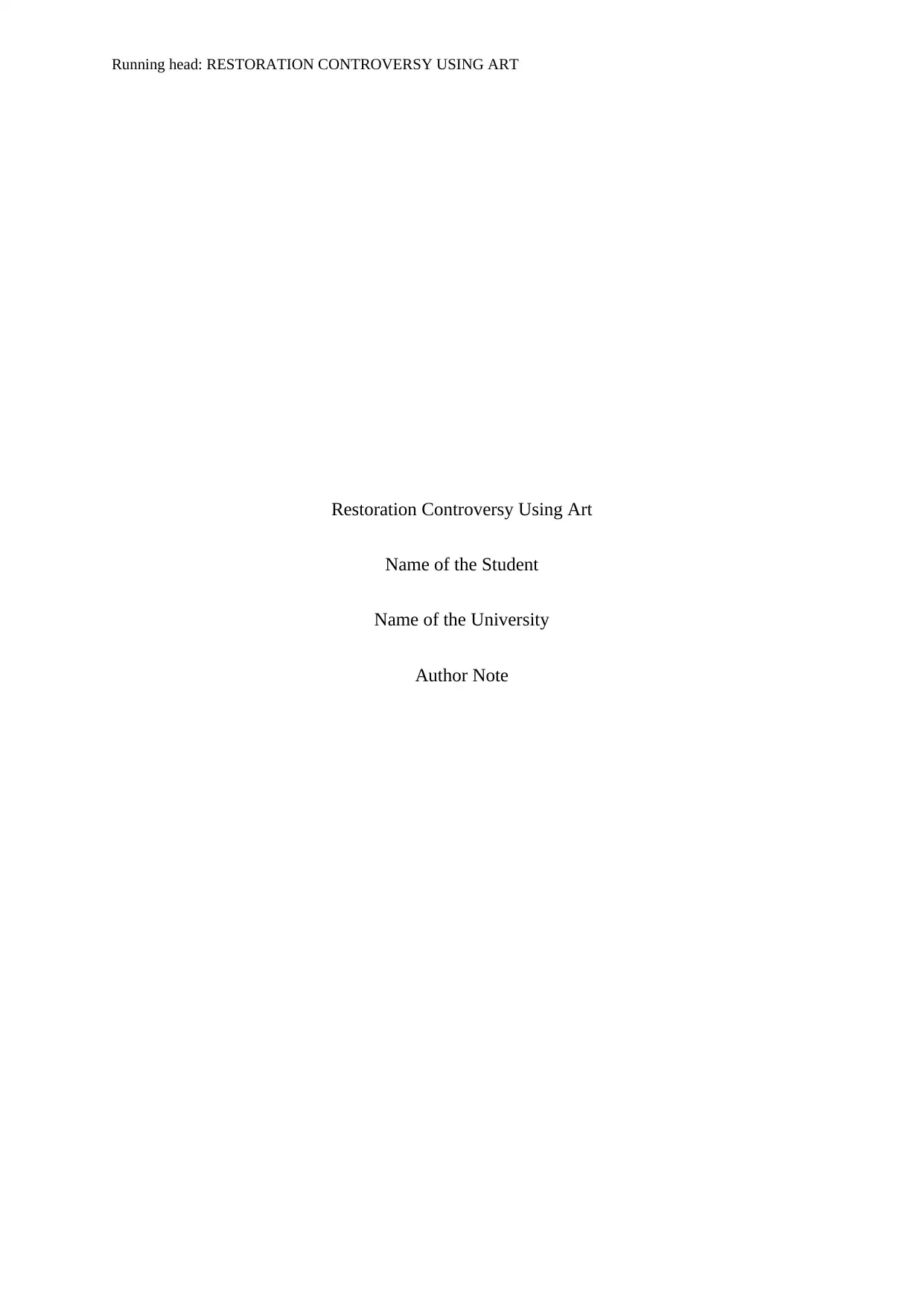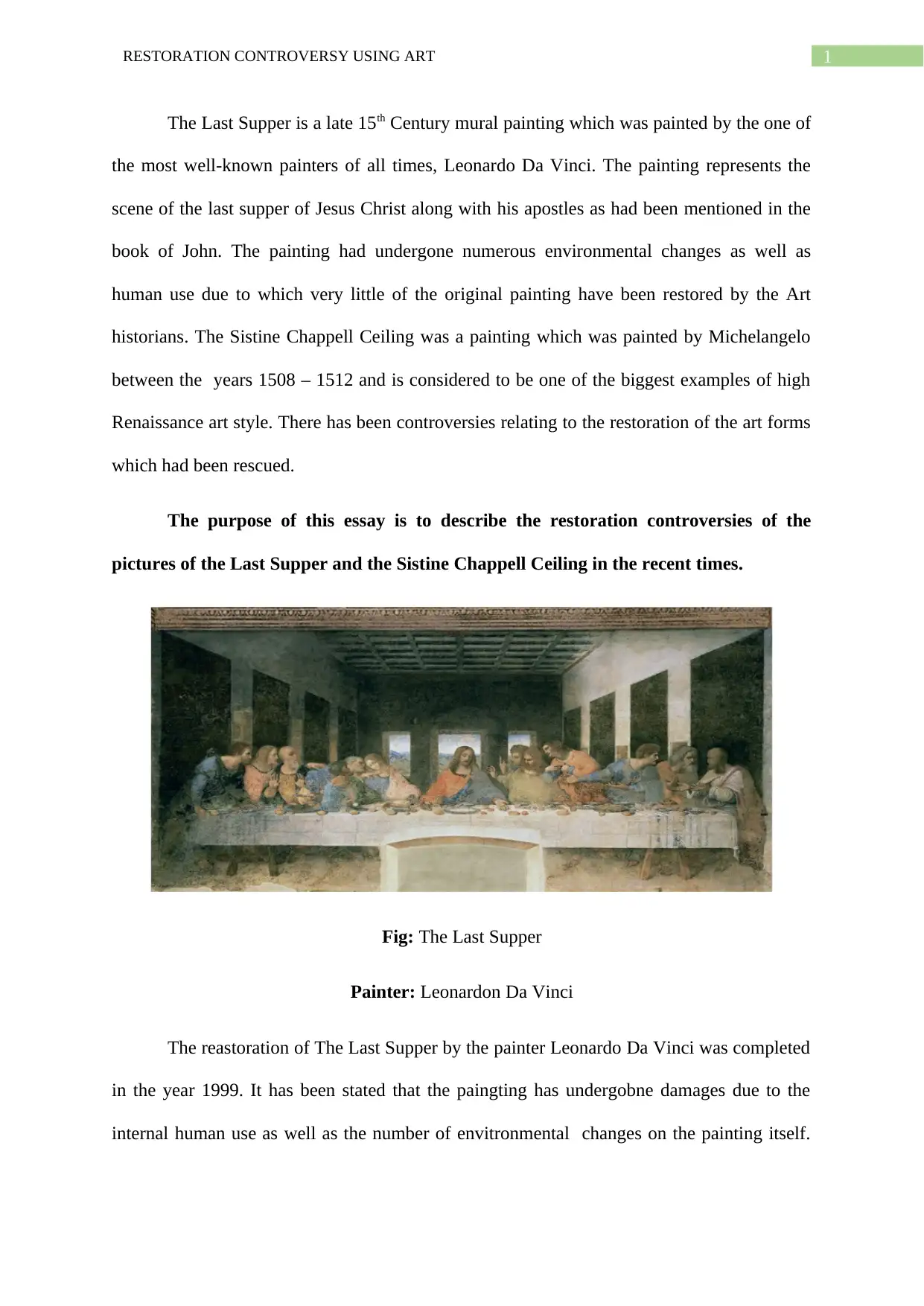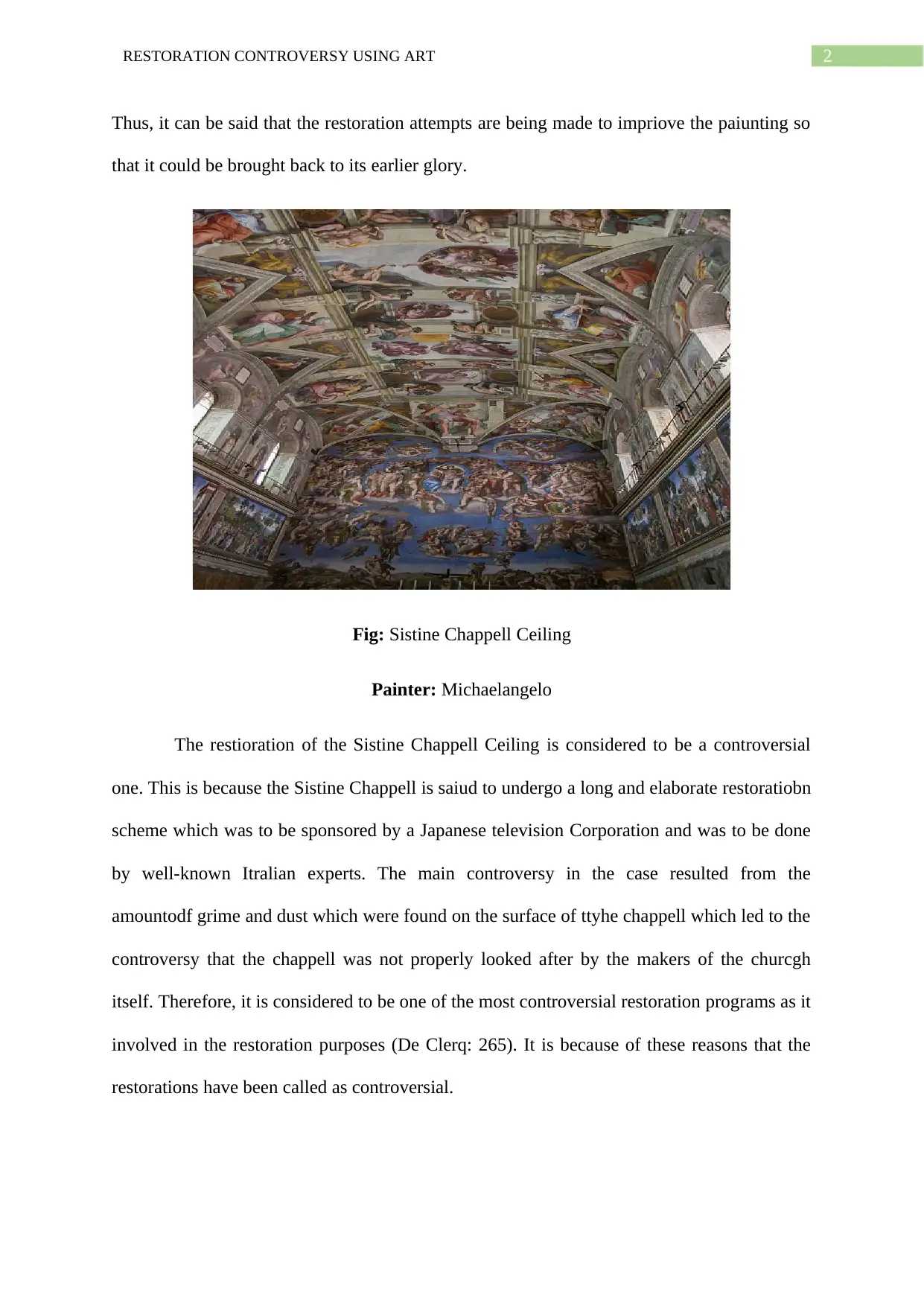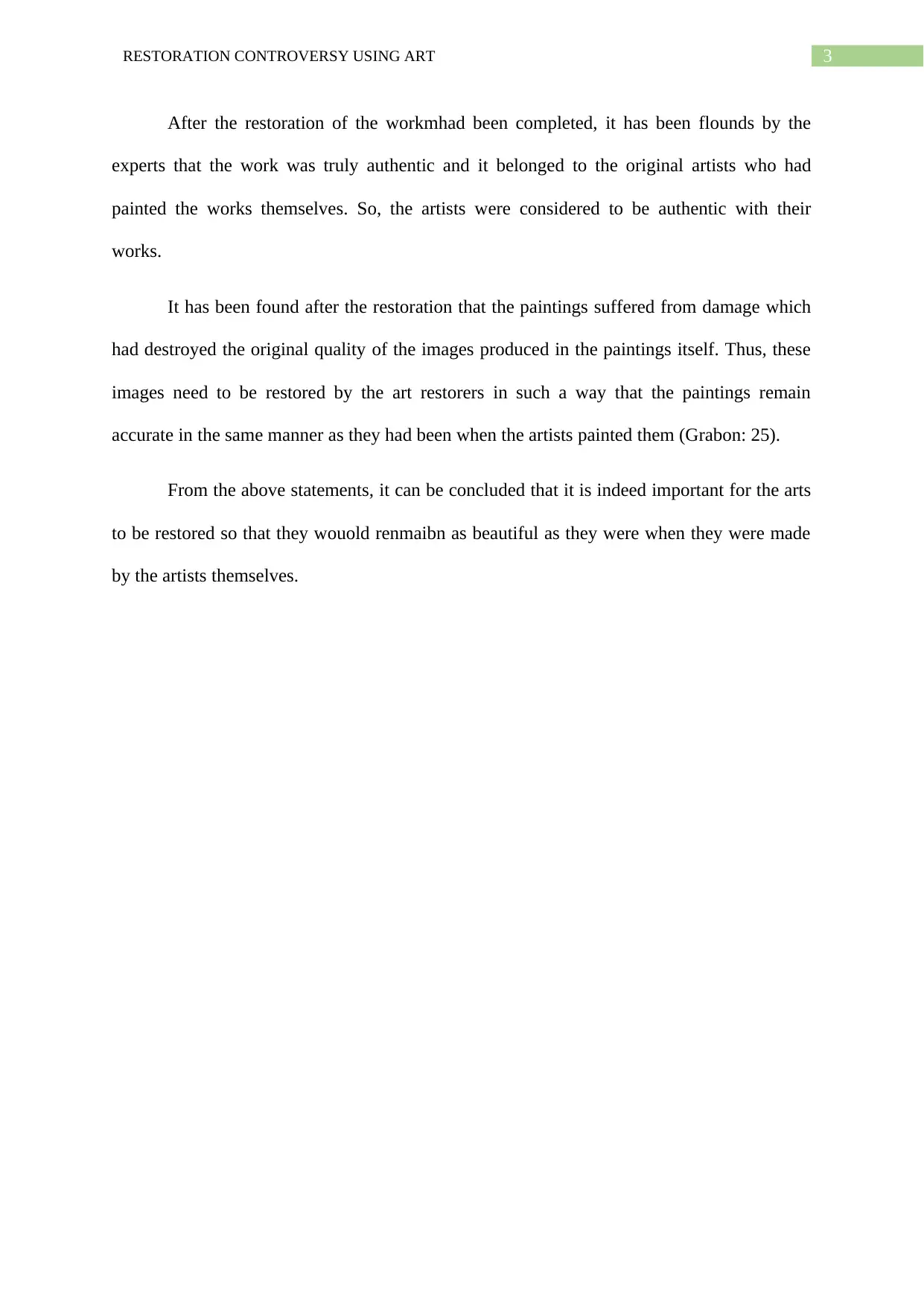Controversies in Art Restoration: Last Supper and Sistine Chapel
VerifiedAdded on 2022/12/27
|5
|647
|21
Essay
AI Summary
This essay delves into the controversies surrounding the restoration of two iconic artworks: Leonardo da Vinci's Last Supper and Michelangelo's Sistine Chapel Ceiling. It examines the damages these paintings have undergone due to environmental changes and human use, highlighting the challenges faced by art historians and restorers. The essay discusses the restoration efforts, the debates that arose, and the importance of preserving the original quality and authenticity of the artworks. It focuses on the controversies related to the Sistine Chapel's restoration, including the grime and dust found on the surface, which led to questions about proper care. The essay concludes by emphasizing the significance of art restoration in maintaining the beauty and historical value of these masterpieces.
1 out of 5











![[object Object]](/_next/static/media/star-bottom.7253800d.svg)